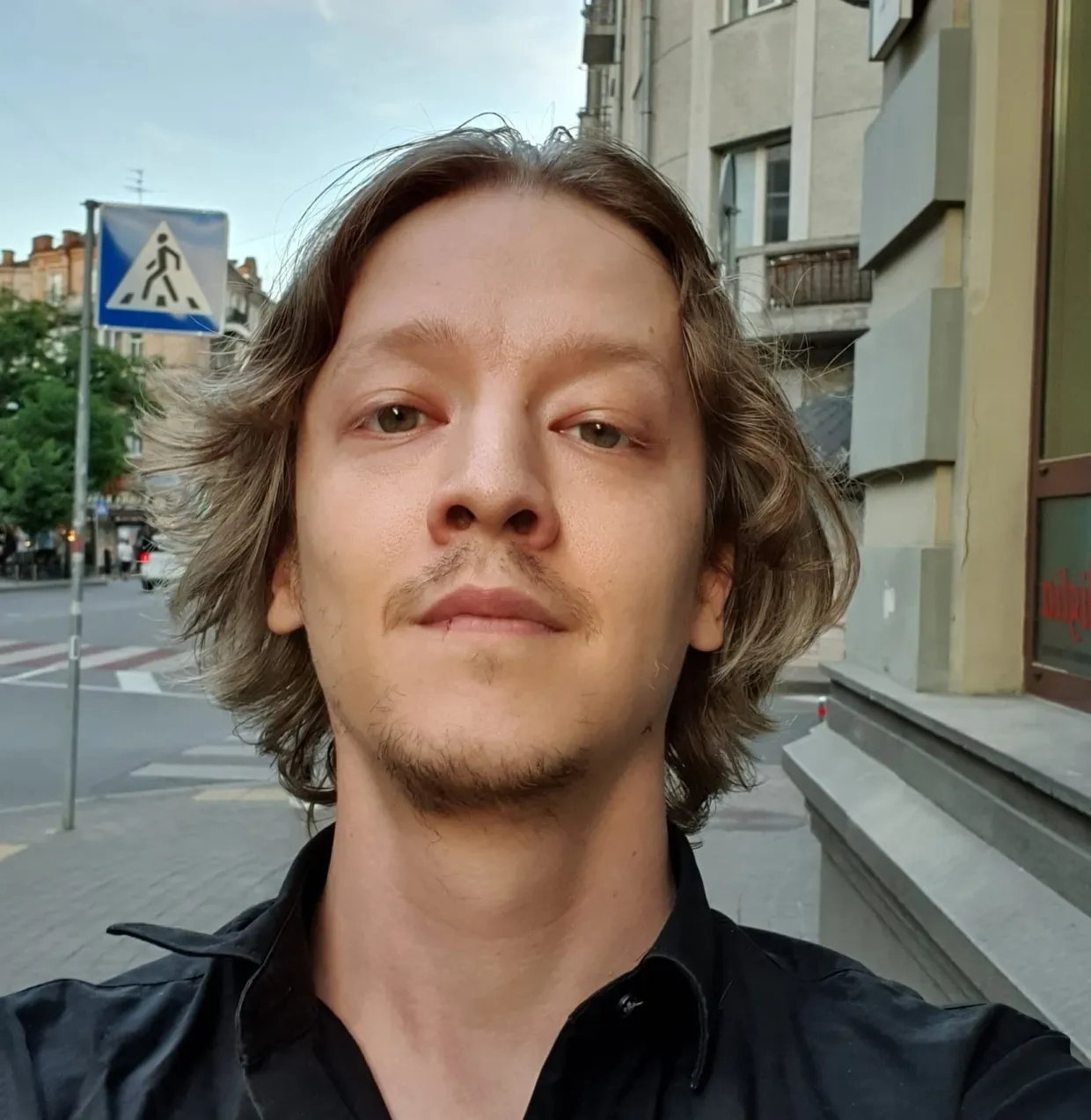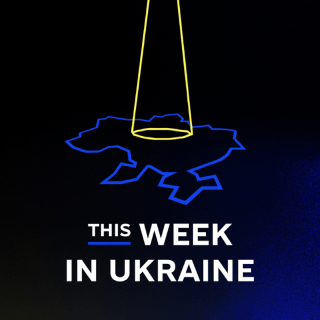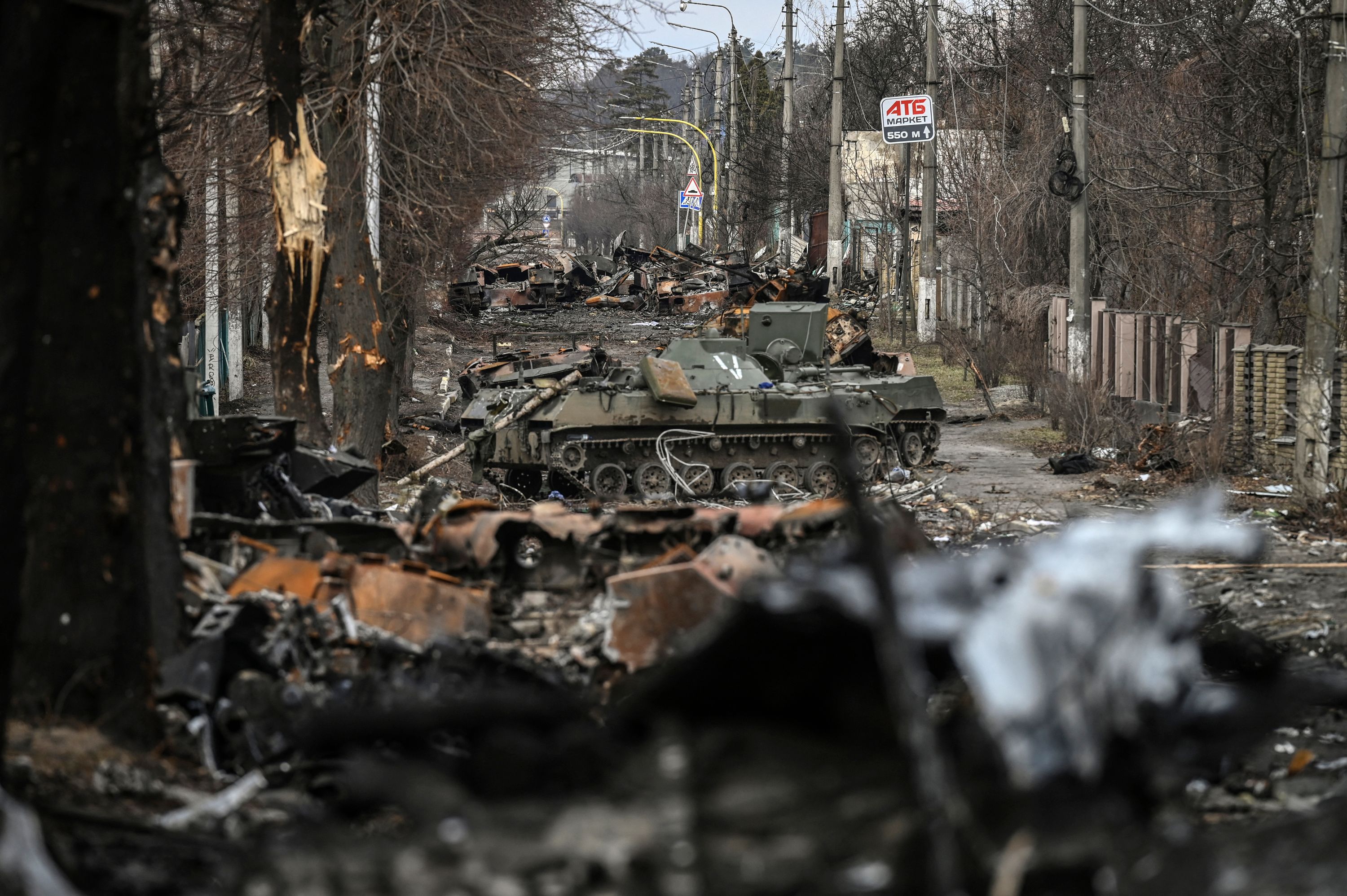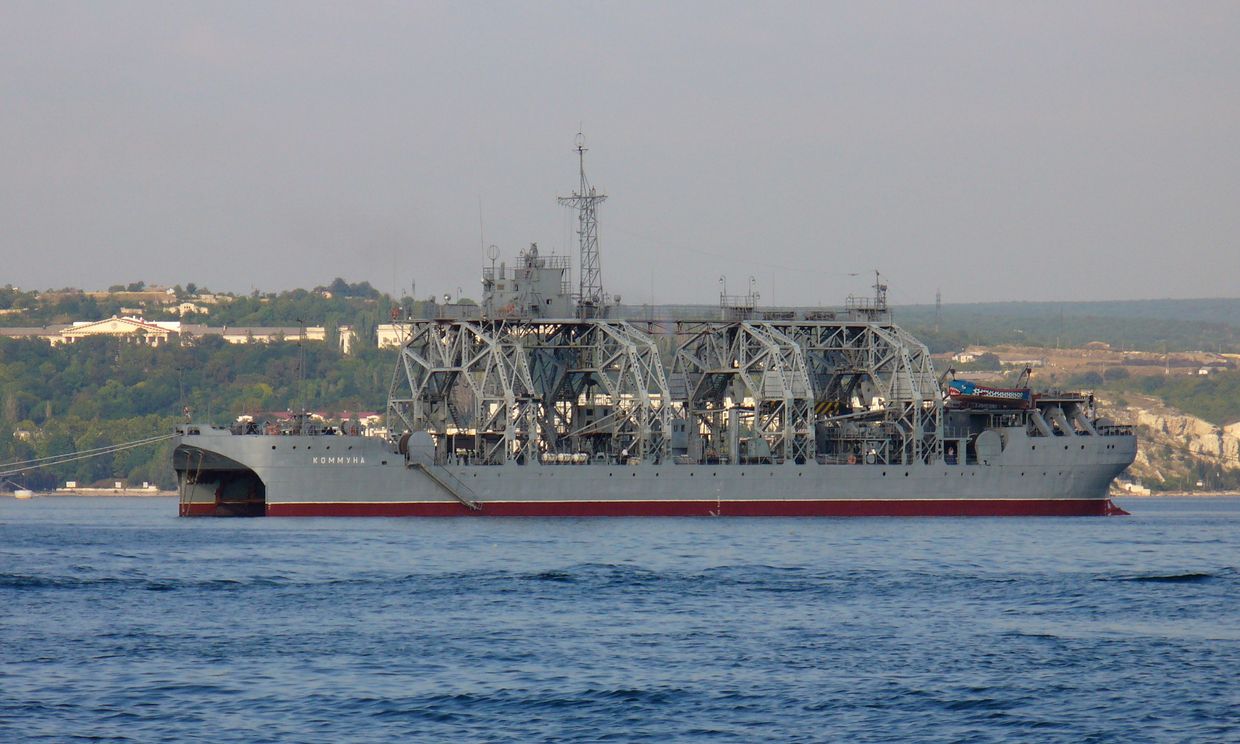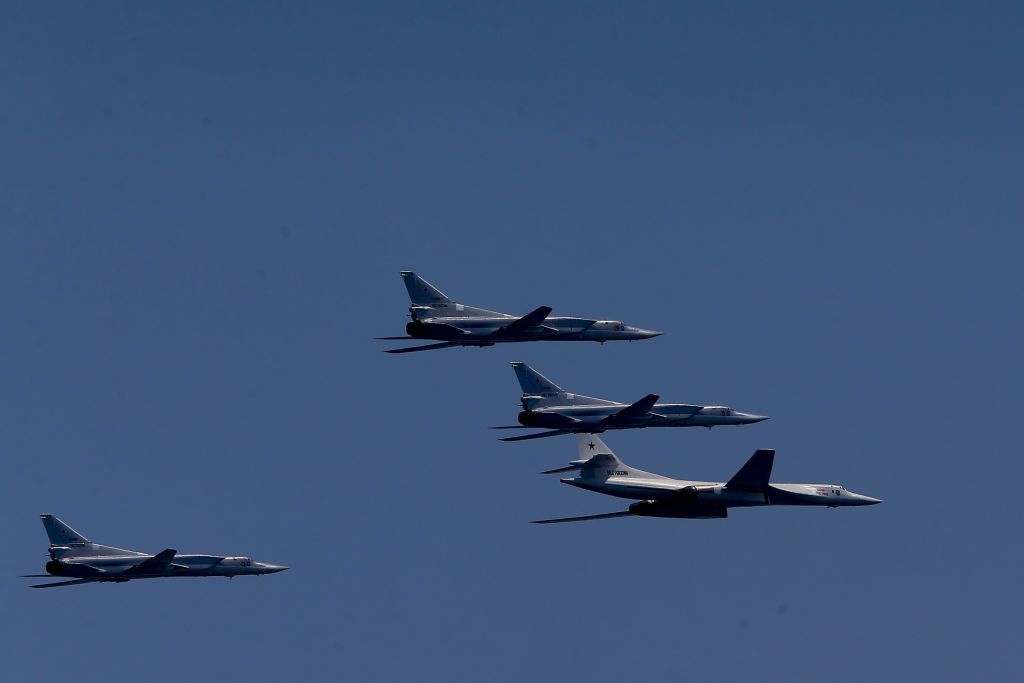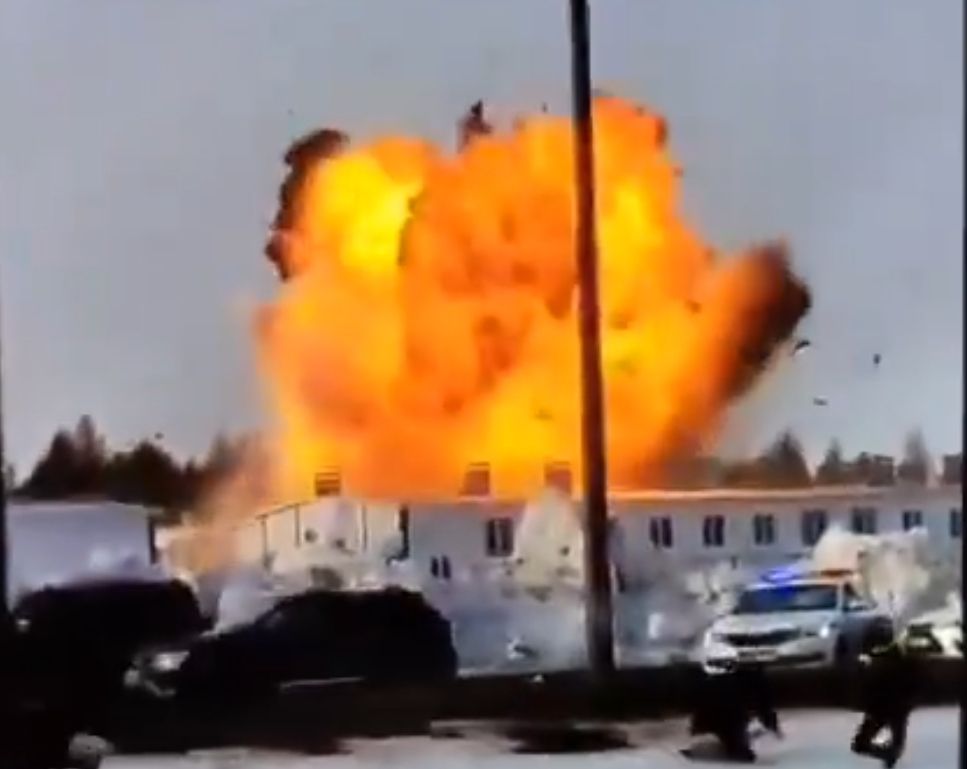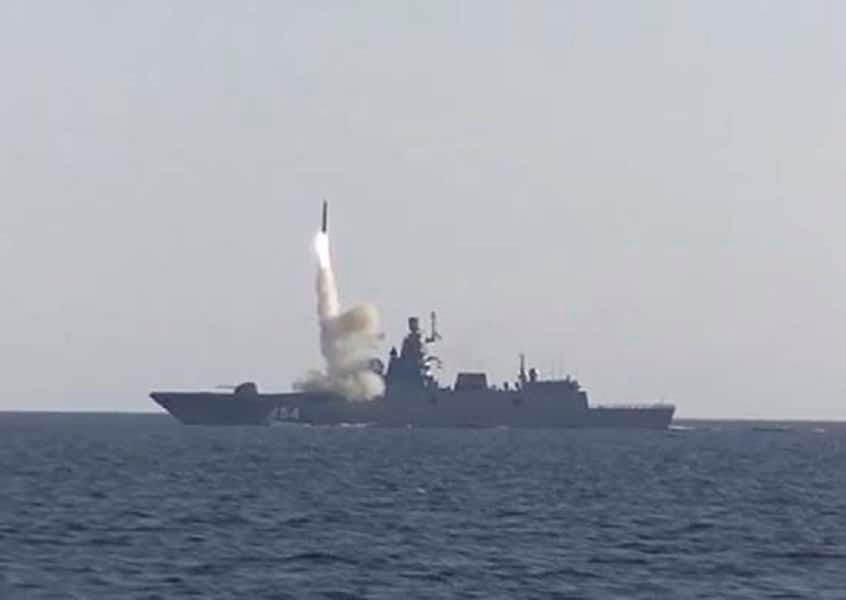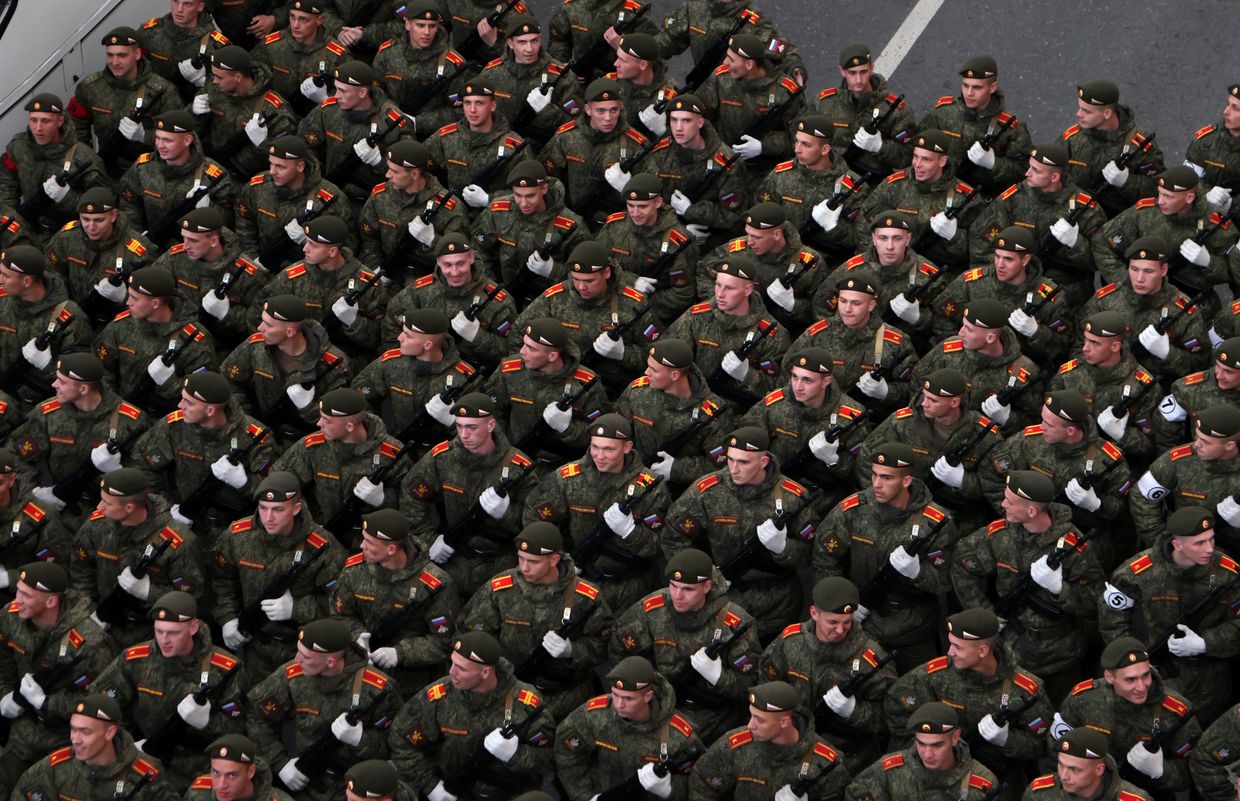While Ukrainian forces have, so far, successfully held off the Russian troops from taking Kyiv, the towns around the capital have become some of the most intense battlegrounds of the ongoing war.
Russia seized the outlying suburban towns with vehicles and infantry, setting up checkpoints and, in many cases, cutting off access to utilities, phone and internet access, and food.
The local civilians bore the brunt of the damage. Many remained trapped, in most cases for over a week, either because Russian forces wouldn’t let them leave or they were afraid of being cut down by Russian fire if they tried to flee to the safety of Kyiv.
Scenes of Russian troops firing at civilians trying to flee, with bodies piling on the streets of Kyiv’s northwest suburbs, have now become a horrific image of what Russia’s war brought to Ukraine.
As of March 9, the United Nations Office for Human Rights had recorded 1,424 civilian casualties, 516 killed, including 37 children, and 908 injured after Russia invaded Ukraine on Feb. 24. The organization believes that the actual figures are “considerably higher, especially in government-controlled areas.”
The past week has seen numerous attempts to move civilians out of surrounded or occupied areas through “green corridors” all over the country, the towns and villages around Kyiv being no exception.
But, as in many other parts of the country, Russian forces have selectively violated these corridors, either firing on the evacuees with indirect-fire weapons or shooting them point-blank.
For many, the road to safety was taxing, because of the trials along the way and the pain of what they had to leave behind.
The Kyiv Independent has gathered stories from people who fled the various towns and villages towards the safety of Kyiv.

Demydiv
The northern village of Demydiv of some 3,700 people sits near the edge of the reservoir, widely known as the Kyiv Sea. Valentyna Bilan was trapped there with her family from the first days of the war and until March 9, when they got out.
“We saw a lot of tanks coming from Belarus,” she told the Kyiv Independent by phone after successfully escaping into Kyiv with her husband and dog. “Then battles began in our village. The center was destroyed, houses were demolished. We didn’t have a phone connection, food or water all this time.”
The Russians climbed a nearby water tower and set up weapons on it, giving them a vantage point to shoot targets in the area. They also started going around houses, forcing the gates open and inspecting basements to see who was hiding there, according to Bilan.
All this made her and her husband decide that it was time to go.
An evacuation corridor was supposed to be in effect on March 9. They linked up with a group of about 20 people that decided to ford the nearby length of the Irpin river and into the northern outskirts of Kyiv.
As soon as they departed, they ran into a young Russian soldier, who said with a smirk: “so you actually think you’ll make it?”
Bilan expressed confidence that they would. It was then that the soldier made a call to somebody.
When they got to the river, they saw it wasn’t going to be easy. Ukrainian forces had blown a nearby dam and pumping station connecting the river to the reservoir, causing the water level to rise. To cross, the evacuees, including children and the elderly, would have to plunge into waist-high water, while the temperature outside was three degrees below freezing.
All they had to hand were a few styrofoam floats for the kids.
As soon as they began to cross, Russian helicopters arrived and began to strafe them with machine gun fire, Bilan said.
"And then they started to shoot at us from the helicopters," she told the Kyiv Independent, beginning to cry. "At the children, at us, right where we were crossing... I saw the ‘splash splash splash’ of bullets on the water."
“My neighbor went underwater and her child on the styrofoam was screaming. She came out again and they survived,” Bilan recalled through her tears. “One paralyzed old woman was being helped by the guys. One guy is a hero, he went a dozen times into the water and pulled us out. After that, his legs were all purple from the cold.”
“I don’t remember how I made it across – we had a dog and I apparently dragged her with me. I have a sick husband – I don’t remember how we came out of it.”
Not everyone made it. Two of the men helping people cross were wounded by the machine gun fire, Bilan said. One was killed.
After they forded the river, they had to walk eight kilometers with all their stuff, while soaked, in subzero temperatures, until they could be picked up and taken to Kyiv.
There, Bilan and her husband were reunited with their children. She still has a high fever from walking in the cold while wet.
“I went through the EuroMaidan, I’ve seen worse,” she said. “I miraculously survived then too. Maybe I was preserved for something greater. My son is defending Kyiv, which is why I’m meant to be here.”

Bucha
The town of Bucha has been the site of many horror stories, of people trapped, unable to reach their families or simply being gunned down in the streets.
The Kyiv Independent’s source in the medical field in Bucha reported digging mass graves over the past two days.
Dmytro Tkachuk, a Bucha resident, posted a tale of his family’s escape from the town on Facebook on March 8.
"In the beginning of March, we went out to get drinking water from the pump, came to the end of the street and ran into enemy armor, marked with the letter V," he wrote. " We turned around and went home. Fear paralyzed the mind but the body still moved."
Airstrikes had ripped through the town, demolishing and igniting buildings, forcing the family to relocate to the basement, which had a temperature of 5-7 degrees Celsius. Eventually, a Russian tank drove onto their street and fired directly into the second house over from theirs, according to Tkachuk. The tank then struck the cupola of a church just down the street.
“The sound was like all the bell towers in the world ringing at the same time,” Tkachuk wrote.
When he saw Russian squads walking around peeking into people’s windows, he realized there was no sense in waiting around any longer. The neighbors joined his family when they saw them leaving. As locals, they knew all the small paths and side streets, letting them avoid the Russian checkpoint.
After resting up in an Irpin church, they had to move across a field to get to the river crossing. Soldiers told them that as soon as they heard a whistling sound, they had mere seconds to dive to the ground.
The advice came in handy almost immediately. As they moved across the field, numerous rounds came hurtling in, throwing up explosions and demolishing buildings on both sides of the bridge. The family was fleeing with their two grandmothers. On the way to the crossing, one of the grandmothers’ legs gave out, forcing Tkachuk and his sister to carry her, while lugging around a suitcase with his valuables.
"The granny was screaming for us to leave her and run for the bridge," he wrote. "If that's not hell, what is?"
They huddled under the bridge with the other frightened people – moving forward was too dangerous while shells were flying. Eventually, a Ukrainian soldier cleared them to advance.
A soldier on the other side screamed for Tkachuk to run but with the weight of his grandmother and his belongings, he couldn’t run. As he was crossing the open space, he was thinking: “Just not a shell, just not a shell, please.”
“When we entered Kyiv, I cried,” he wrote.
Vorzel
When the war began, Elena Slivinskaya, her husband and two daughters aged 4 and 8 were in Kyiv.
They thought that maybe it’d be safer to wait out the hostilities at their house in Vorzel, near Bucha. That proved to be a mistake.
In the opening hours of the war, the Russians bombed the neighboring town of Hostomel, where a military airfield is based, before dropping airborne troops on top of it. While these troops were quickly eliminated by Ukraine, the bombing continued.
One bomb destroyed the garage of Slivinskaya’s next door neighbor in Vorzel.
“The bombing and the shooting was constant,” she said. “We constantly spent time with the children in the basement.”
The earliest explosions terrified the little girls, who started screaming. They constantly wanted to go down to the basement. But staying in the cold, damp basement too long was also dangerous, as one of the girls was sick and running a very high fever.
The Russian troops that moved through Vorzel found no signs of resistance among the locals. But that didn’t stop them from firing at the houses’ second floors, possibly to make sure people didn’t peek out at them, Slivinskaya said. She was told that at least one of her neighbors had been shot dead by a Russian soldier while walking outside.
Even though there was no connection, some SMS still managed to get through once in a while. One of these stated there would be an evacuation on March 9.
“There was a mass of people, they said they were only evacuating women and children,” she said. “But we also saw that there were cars waiting. I told my husband, he jumped in our car and we joined the column.”
What followed was a 14-hour stint behind the wheel. The vehicular queue was enormous, hundreds of cars barely creeping along, passing Ukrainian checkpoints through the night, towards the Zhytomyr Highway and into Kyiv. Vorzel is just 10 kilometers west of Kyiv.
Slivinskaya recalled how eerie it felt, being a sitting target out in the open, with numerous headlights in the middle of the night. Trapped between cars ahead and behind, there would be nowhere to floor it if things got bad. Continuous explosions could be heard on all sides, any one of which seemed like it could hit the convoy at any moment.
“But we finally broke through,” and made it into Kyiv, Slivinskaya said.
Stoyanka
Some people manage to escape the war zone only after they’ve drawn their final breath.
In early March, two old friends in the village of Stoyanka-2, east of Kyiv and just south of Irpin, went on a supply run.
“They went to pick up some diesel fuel and medicine for civilian use,” said Oleksandr, the nephew of one of the two men. “They had no weapons. When they were returning to Stoyanka, two Russian APCs stood in their way. They ran into a temporary Russian checkpoint.”
(Editor’s Note: The Kyiv Independent doesn’t publish Oleksandr’s full name for security reasons: He still goes into Russian-controlled territory.)
The friends raised their hands and the Russian commanding officer waved them through. But all of a sudden, Russian soldiers behind him opened fire.
“They were shooting to kill,” Oleksandr said.
One of the friends was killed outright. But Oleksandr’s uncle, wounded in the arm and side, managed to crawl away and survive. A neighbor picked him up, bound his wounds and took him to Stoyanka-2.
Miraculously, one of their neighbors had a guest, a visiting surgeon who was there because of the war. He had his tools and painkillers with him and managed to save the uncle, who was well enough to stand and move around on his own several days later.
His friend Arkady continued to lie in the road for four days until Oleksandr could pick up his body and drive it towards Kyiv. Along the way, he picked up another slain man and his wife, who had been wounded in the leg and was beside herself with grief.
The two bodies were brought across the Irpin River crossing to the other side and sent to Kyiv for burial.
Yet even after his brush with death, Oleksandr’s uncle refuses to leave his home in Stoyanka, vowing to defend it to the last.
